Hoka One One Speedgoat 3
Stated Heel-to-Toe Drop: 4.0 mm
Stack Height: 32 mm (heel) 28 mm (forefoot)
Stated Features:
- Open engineered mesh construction to maximize breathability and support
- Reinforced TPU midfoot overlays to help ensure a secure fit
- Midfoot cage construction designed for stability and lockdown/foot capture
- Oversized EVA midsole provides lightweight cushioning
- Wider platform designed to provide a more stable base on varied terra
- Vibram® Megagrip hi-traction outsole with 5mm lugs
MSRP: $140.00
Size Tested: US Women’s 8
Stated Weight per Shoe (US Women’s size 7): 258 grams / 9.1 oz
Blister’s Measured Weight per Shoe (US Women’s size 8): 259 grams / 9.14 oz
Test Locations: Gunnison – Crested Butte Valley & Boulder, Colorado
Test Duration: ~200 Miles
Reviewer: 5’9 , 115 lbs
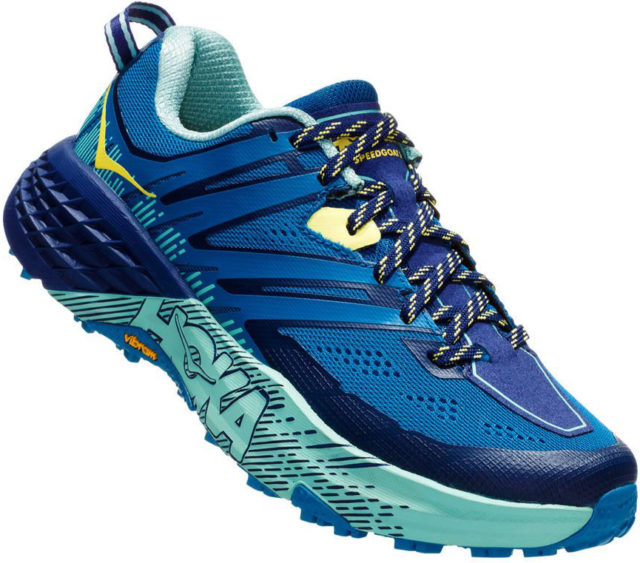
Intro
The Speedgoat is one of Hoka’s most popular trail shoes, designed to offer a comfortable and stable ride on terrain ranging from gentle groomed trails to rugged, rocky adventures. Hoka’s shoes all provide lots of cushioning designed to help reduce overuse injuries, and the Speedgoat 3 is no exception with a fat 28 mm stack height and plenty of EVA foam underfoot.
The Speedgoat 2 was one of my go-to’s for both everyday training as well as longer ultra-marathon races, and fellow reviewer, Luke Koppa, was also a fan (see his review of the Speedgoat 2).
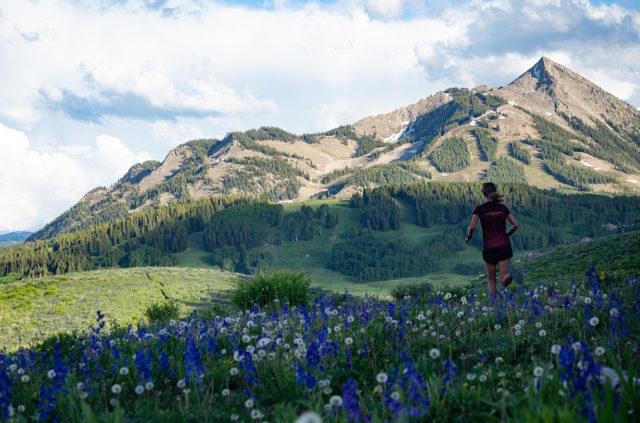
That said, many runners claim that the high stack height and ample cushioning of shoes like the Speedgoat 2 create a feeling of instability and risk of rolling an ankle. The new Speedgoat 3 aims to solve this issue by adding more support in the upper.
After the first ~200 miles in the new model of the Speedgoat, I can already feel the improvements made from the Speedgoat 2. With that in mind, this shoe is not for everyone, so here I’ll cover who should and should not grab a pair of these shoes.
Fit
As always, we highly recommend trying on any shoe before purchasing. With that said, here’s how the Speedgoat 3 fits my feet. For reference, I have pretty narrow feet but prefer shoes with toe boxes that let my toes splay out a bit.
While many of Hoka’s shoes have a wider fit, the Speedgoat 3 is relatively slim compared to many of their other models. This slimmer fit creates a shoe that feels comfortable in a pretty wide variety of terrain that you may encounter throughout the day.
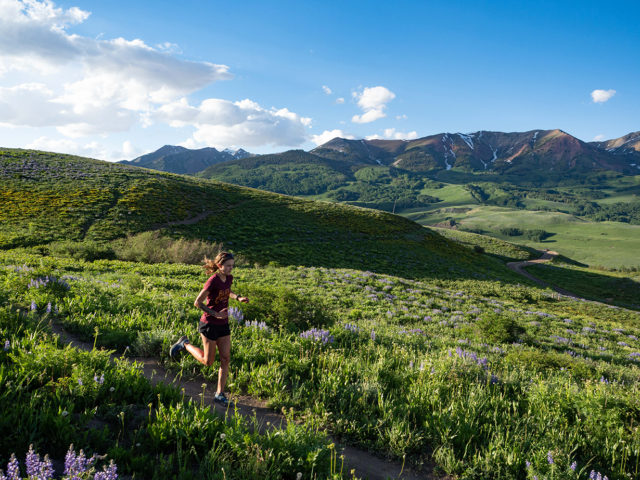
With the additions to the Speedgoat 3’s upper and the already narrower fit (compared to other Hoka shoes), the Speedgoat 3 feels a bit tighter and more secure than many of their shoes (e.g., Stinson ATR 4 & Challenger ATR 5). I have a narrow foot and these shoes fit well across the entirety of my foot, not squeezing too tight in any specific areas. With that in mind, if you have a wider foot, this shoe may be a bit tight through the midfoot (something Luke Koppa noticed with the Speedgoat 2).
I found that the Speedgoat 3 fit very similarly to the Speedgoat 2. These shoes run true to size; I have worn a size 8 in all Hoka shoes and an 8 fits true in the Speedgoat 3. While my toes have a bit of room, the Speedgoat 3’s narrower midfoot helps prevent my feet from sliding around. I tend to prefer slightly more room near my toes, especially during ultramarathons where my feet tend to swell. The size 8 in the Speedgoat 3 (and Speedgoat 2) gave me enough room to feel like my toes had space, but the upper helped my foot feel secure and prevent any sliding.
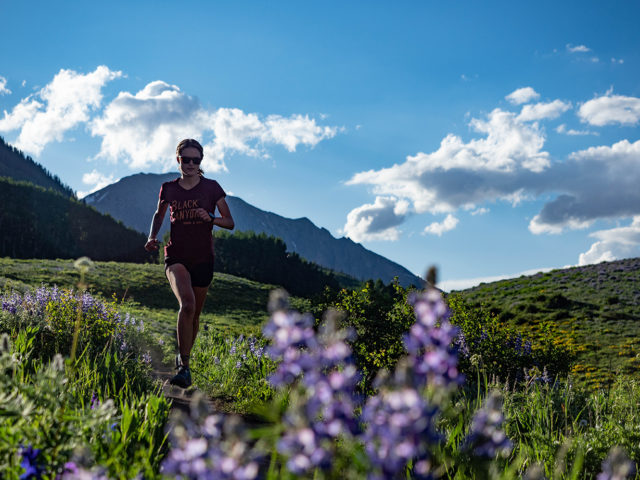
The Speedgoat 3 also has improved heel support vs. the Speedgoat 2, which adds additional stability for the foot. I have yet to experience any blisters or hot spots during my miles spent in these shoes, which is a huge plus for me as most shoes I wear cause excessive rubbing somewhere along my foot.
Overall, the Speedgoat 3 fits similarly to the Salomon Sense Ride and Adidas Terrex Speed, both of which I’d consider to be narrower shoes. The toe box on the Speedgoat 3 is wider than the Sense Ride and the Terrex Speed, but the fit through the midfoot is very similar in all three shoes.
Drop
The Speedgoat 3 has a 4.0 mm heel-to-toe drop, which is on the less-drop / flatter end of the spectrum, but still not in full zero-drop territory. The Speedgoat 3’s subtle drop helps to create an agile-feeling shoe that’s designed to decrease heel striking / increasing mid and forefoot striking.
The Speedgoat 3 has a very slightly smaller drop compared to the Speedgoat 2 (4.0 mm vs. 4.5 mm, respectively), but the Speedgoat 3 feels essentially identical to the 2 in terms of drop. The only difference that I noted on the Speedgoat 3 is that I felt more confident on the downhills as I felt I was landing more on my forefoot. But again, the difference I felt was small.
Weight (and Comparisons)
The updated Speedgoat 3 comes in at a stated weight of 258 grams / 9.1 oz per shoe for a US Women’s size 7, with our pair of US Women’s size 8 coming in at an average measured weight of 259 grams / 9.14 oz per shoe.
The Speedgoat 3 did gain some weight, as the Speedgoat 2 had a stated weight of 232 grams / 8.2 oz. This increase in weight comes from the new overlay support added to the upper of the Speedgoat 3. That said, the difference in weight between the two versions is so minute that I did not know there actually was a weight difference until I looked at the specs of the shoes. I did feel like the Speedgoat 3 was clunkier compared to my other (less cushioned) shoes, but this was due to the Speedgoat 3’s wider sole, not the slight increase in weight.
For reference, here are some of the measured weights (per shoe) of some other shoes I’ve been spending time in. All weights are for a US Women’s size 8.
232 grams Hoka One One Speedgoat 2
237 grams Hoka One One Challenger ATR 5
255.5 grams Salomon Sense Ride
259 grams Hoka One One Speedgoat 3
281 grams Hoka Ona One Stinson ATR 4
Upper
As I alluded to above, the Speedgoat 3’s upper has been bolstered with added reinforcements, making the shoe fit more securely. The shoe implements both “reinforced thermoplastic polyurethane midfoot overlays” as well as a midfoot “cage” construction to hold your foot securely in place.
Hoka claims that this technology helps to minimize blisters and other foot issues that may arise from a sloppier fit. This technology, combined with the Speedgoat 3’s narrower fit, makes its upper fit more snugly than the other Hoka shoes I have run in (Speedgoat 2, Challenger ATR 5, Stinson ATR 4). Personally, I really like the way the Speedgoat 3’s upper feels; on climbs and descents, my foot never slides which is super important to me. While the upper around the midfoot has added reinforcements, they don’t make it feel significantly bulkier compared to the Speedgoat 2, and I did not feel as if the shoe needed additional time to break in compared to the Speedgoat 2 (or much break-in time at all).
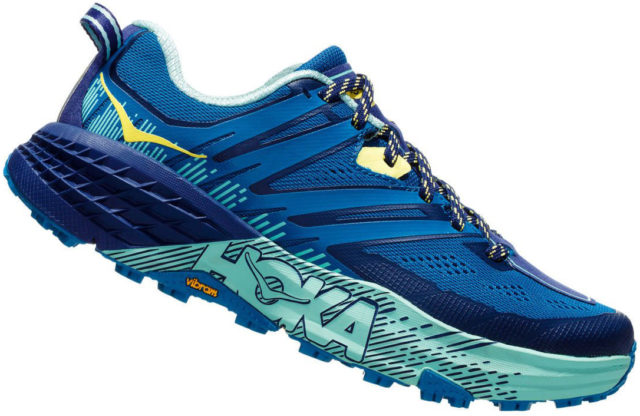
My feet usually tend to get very hot, and I could definitely feel them sweating in these shoes. The Speedgoat 3 is pretty breathable, but not to the extent that my feet would prefer on a hot summer day. Compared to the Speedgoat 2, the breathability is basically identical, and overall I haven’t really found a pair of trail shoes I like that breathe super well, so I wouldn’t count this as much of a slight against the Speedgoat 3.
Midsole & Cushioning
Hoka shoes are known for their plush, generous cushioning. Hoka lists three different levels of cushioning for their shoes (from least- to most-cushioned): responsive, balanced, or plush. Hoka classifies the Speedgoat 3’s cushion as “balanced.”
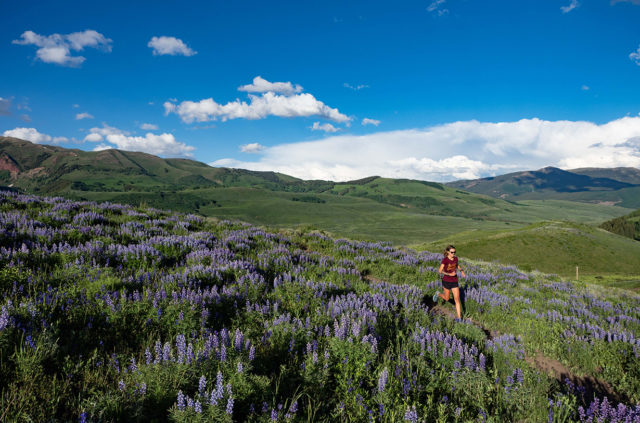
I felt that the Speedgoat 3 had enough cushion to help keep my legs fresh after logging many miles, but did not have so much that the shoe felt excessively heavy or bulky. I didn’t feel like the Speedgoat 3 was too stiff or too hard — just with enough cushion for long miles. The new Speedgoat 3’s midsole feels similarly stiff (both laterally and longitudinally) compared to the Speedgoat 2.
The Speedgoat 2 and Speedgoat 3 share a nearly identical midsole, and here’s what Luke Koppa said about the midsole and cushioning of the Speedgoat 2:
“Despite its thicker midsole, the Speedgoat 2 still provides a pretty energetic feel. I can run much more confidently in the Speedgoat 2 than the [original] Clifton 1 thanks mostly to the Speedgoat 2’s narrower last, stickier outsole, and firmer midsole. The Speedgoat 2 is not as sensitive or precise as the less-cushioned, narrower Salomon Sense Mantra, but anyone looking for ultimate trail feel in a shoe probably shouldn’t be looking at the Speedgoat 2 in the first place. Compared to the Altra Timp and its firmer midsole, the Speedgoat 2 has more of a “bouncy” ride and feels a bit less precise / sensitive.
While running uphill in the Speedgoat 2, I was happy with the midsole, which flexed enough to engage the forefoot of the sole, but didn’t fold up in any specific spot, and instead had a very consistent flex. The Speedgoat 2 has a slightly less rockered heel than the Clifton, which I really appreciated on descents where I needed to engage the braking lugs on the heel.”
The Speedgoat 3 has an oversized midsole and outsole which help to distribute weight and provide cushion to the whole foot. It took me a few days to adjust to the wider midsole as it felt a bit clunky at first, but after a few runs, I did not notice that the shoe had a wider base.
Outsole & Traction
The traction on this shoe makes me feel confident on a lot of different terrain and steep descents. Even when I was bombing down Green Mountain in Boulder, Colorado, I felt confident that the tread was not going to slide out. The Speedgoat 3’s lugs are large enough at 5 mm to provide traction on iffy trail conditions without feeling grabby on smoother trails. While the Speedgoat 3 does not have a rock plate, its generous cushioning limits ground feel and has prevented any pain while landing on rocks and roots.
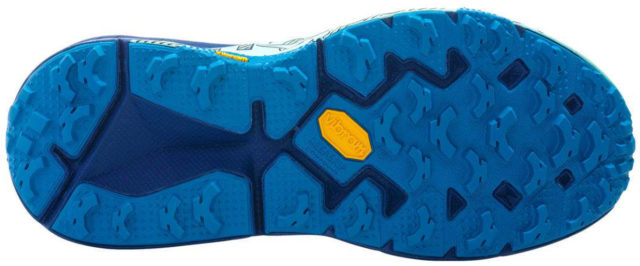
Both the Speedgoat 2 and Speedgoat 3 use a Vibram MegaGrip outsole, so there is no difference between the soles on the two versions. I did not feel super confident in these shoes on loose rocks, particularly on the downhills, but I only noticed this when I was running fast and not paying attention to foot placement, as I had the continual feeling that I my ankle would topple over the side. I.e., this was more of a stability issue than a grip issue. I also did not feel that I was getting great traction from the shoe in really slick, deep mud, but I have yet to find any shoe that handles well in Goose Grease, so this is nothing new.
On my pair of the Speedgoat 2, the lugs on the outer part of the sole became very small or even fell off the shoe after about 300 miles, so I am interested to see if the Speedgoat 3 will wear in a similar manner. With many of my other training shoes, I need to retire them due to uppers tearing, but I ended up needing to ditch the Speedgoat 2 due to wear on the bottom of the shoe. But at least after the first 200 miles, there is zero sign of wear on the soles of my pair of the Speedgoat 3.
On The Trail
The Speedgoat 3 feels quick and energetic on less technical trails, despite its fat midsole. While running the Upper-Lower and Upper-Upper loop in Crested Butte, Colorado, I loved the Speedgoat 3. I felt that these shoes excelled on less technical terrain, which is what I normally end up running.
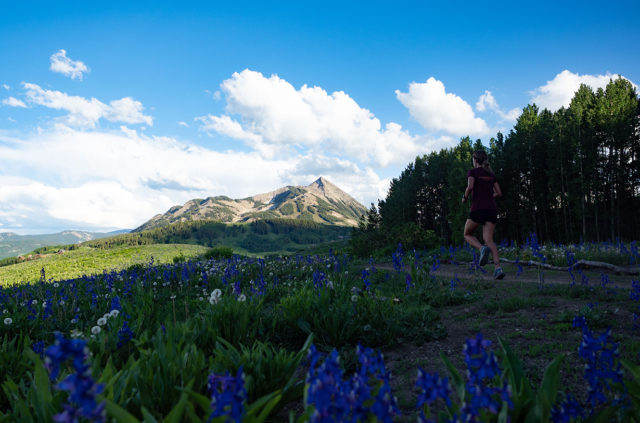
While the Speedgoat 3 felt great on smoother / more consistent trails, it felt a bit unstable when I began descending Crested Butte’s Summit Trail, which features more scree and larger rocks that you have to navigate over. Here, I couldn’t run as carelessly and had to place each foot more carefully, not solely because of the technicalities of the trail, but also because I got worried about rolling an ankle due to my foot not landing correctly on each rock.
I have fragile ankles so, for me, the Speedgoat 3’s higher stack makes me nervous on technical trails. The new upper reinforcements made an improvement over the Speedgoat 2 on this type of terrain, but both shoes still make me run more cautiously on these types of trails. This was my biggest complaint about the shoe overall. But for those without ankle insecurity or those accustomed to shoes with high stack heights, this may not be an issue (e.g., Luke Koppa always runs in shoes with similarly fat midsoles and likes using the Speedgoat 2 on a lot of more technical trails).
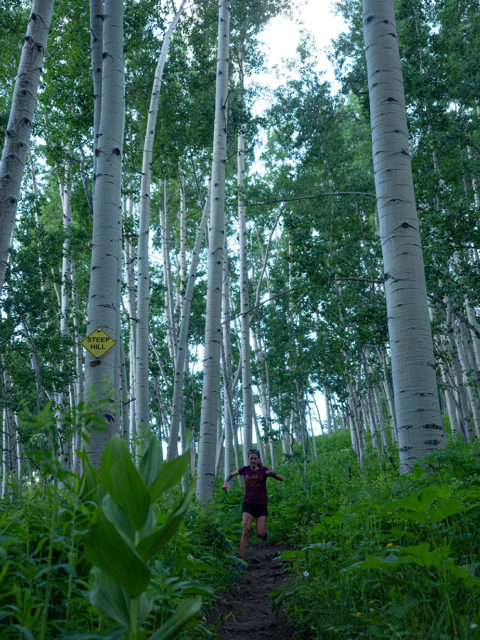
The Speedgoat 3 does have a slightly rockered sole which, personally, I love. This helps me maintain momentum and stay more on my midfoot during descents. The rocker encourages me to run faster, which I appreciate. But unlike some of Hoka’s more heavily rockered shoes, the Speedgoat 3 doesn’t feel like it has too much rocker as I’ve never felt like I could not slow down in it while descending (something Luke noticed with the Stinson ATR 4).
In terms of ground feel, well, this shoe definitely makes a lot of sense for people who don’t want to really feel the rocks and roots below them. I personally prefer shoes that let me feel the ground beneath my feet, but like pretty much any shoe with this thick of a midsole, the Speedgoat 3 does not provide much trail feedback at all.
Durability
After a little over 200 miles in them, it’s almost hard to tell that my pair of the Speedgoat 3 has been worn much, aside from the mud splattered on the sides. I’ve found that the outside of the soles on wider-outsoled shoes like the Speedgoat 3 often wear more quickly, but I have not yet noticed this on these shoes. The Speedgoat 3’s upper shows no sign of fraying or tearing where my toes crease, which is a common problem for me due to the odd shape of my feet.
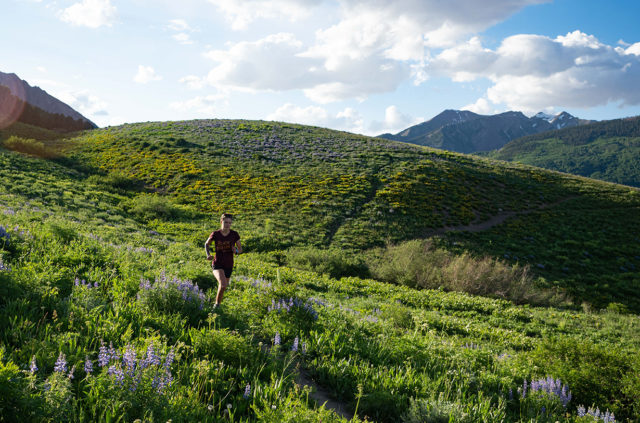
My pair of the Speedgoat 2 lasted me roughly 500 miles and I expect the Speedgoat 3 to hold up just as long, if not longer. I’ll update this review if I notice any unusual durability issues down the line.
Who’s It For?
If you like a shoe that makes you feel like you can fly on the downhills without destroying your quads or knees, you will likely enjoy the ride of the Speedgoat 3. The Speedgoat 3 seems ideal for long days exploring or racing on a wide variety of terrain.
If your runs often include a bit of road or dirt road, the Speedgoat 3’s sole won’t slow you down much, while still providing excellent grip on other surfaces. However, if you have ankles that roll easily, run on a lot of technical, off-camber terrain, and / or prefer shoes that offer lots of ground feel, this is probably not the best shoe for you due to its high stack height. But if you’re in the market for a more maximal all-round trail shoe, the Speedgoat 3 is a very strong candidate.
Bottom Line
Normally my feet and legs suffer a bit from higher-mileage weeks. But after an 85-mile training week in the Hoka One One Speedgoat 3, my feet were blister-less and I ended each day with fresh-feelings legs, ready for the next day of running. And I think that illustrates what makes the Speedgoat 3 stand out from other (often more minimal) trail shoes.
After running a couple hundred miles in the updated Speedgoat 3, I think the updates to the upper have made the shoe even better than the previous model. The improvements from the Speedgoat 2 may be small, but they helped the shoe fit my foot more comfortably and securely. If you prefer trail shoes with lots of cushioning, the Speedgoat 3 is a very compelling option.
